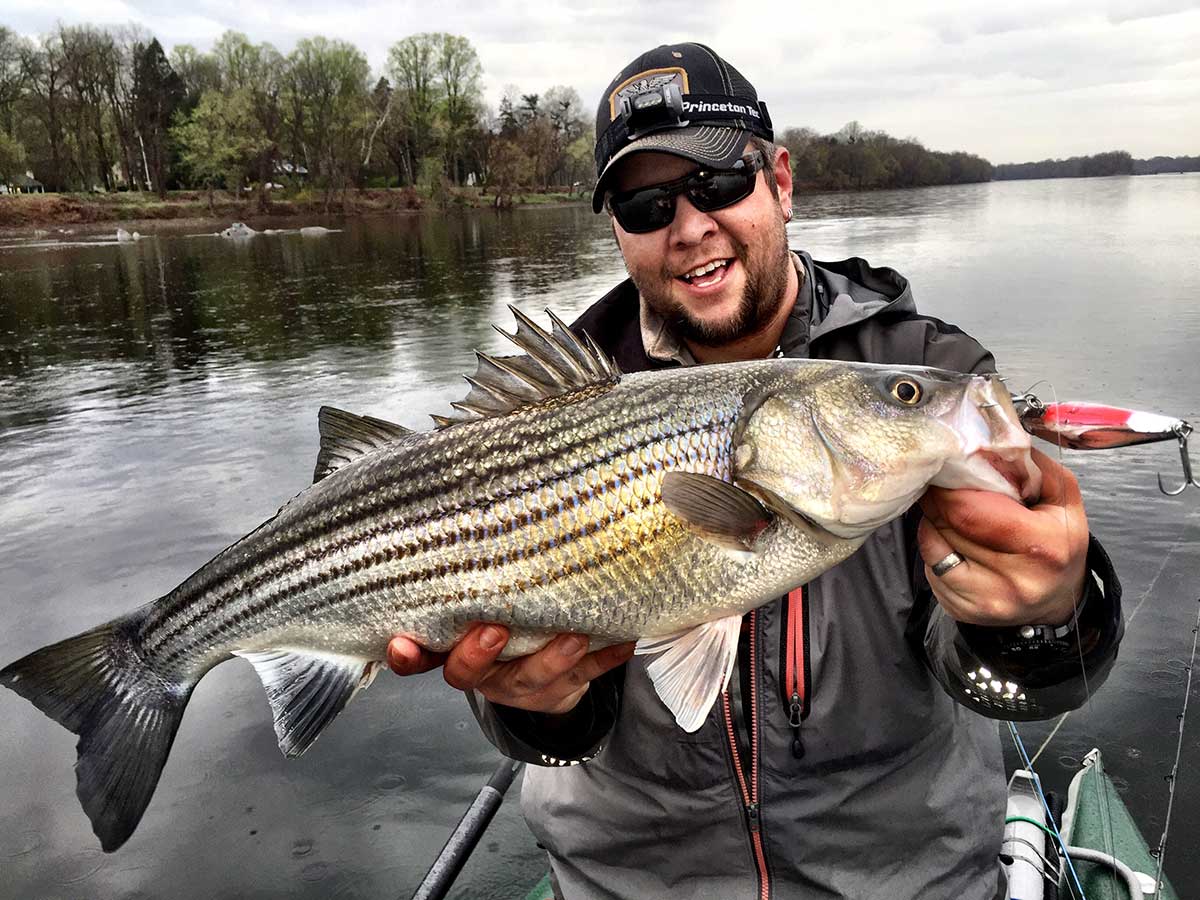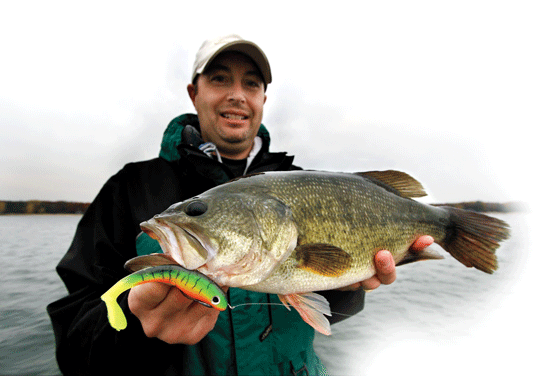How to Catch Striped Bass in Rivers

To catch striped bass in rivers, use live bait and fish during dusk or dawn. Target areas with structure and strong current lines.
Anglers seeking the thrill of landing a striped bass often head to the river, where these game fish are known for putting up a great fight. The key to success lies in understanding the striped bass’s habits and habitat within the riverine environment.
These predatory fish favor locations with ample cover and access to moving water, where they can ambush prey. Fishing enthusiasts should consider the time of day, local weather patterns, and the seasonal patterns of the fish. Early morning hours or just before sunset are prime times for striped bass to feed actively. Knowing the river’s structure—such as rock piles, drop-offs, and eddies—is essential, as these areas often hold schools of striped bass. By applying the right techniques and local knowledge, anglers can increase their chances of a successful catch, making each trip to the river both exciting and rewarding.
Striped Bass Seasonal Patterns
Striped bass display distinct behavioral patterns with the changing seasons. During spring, they migrate up rivers. Warm water triggers the move from coastal areas to upstream environments.
Summer months find these fish in deep river bends. They seek cooler waters with ample baitfish. Avid anglers should target structure such as rock piles. These areas are prime striped bass holding spots.
Come autumn, bass feed aggressively to prepare for winter. Seek areas where currents bring an easy meal. Using lures that mimic forage can prove successful during these feeding frenzies.
With winter’s chill, striped bass become less active. Deep holes and slow-moving waters are their preferred hideouts. Patience is key when fishing during these dormant periods.
Essential Tackle For River Striper Fishing
River striper fishing demands specialized tackle to improve your catch rate. Medium-heavy to heavy rods are best suited for the task. They provide the necessary strength to battle these resilient fish. Look for 7 to 9-foot lengths to cast long distances and manage larger fish.
Combine these rods with high-quality baitcasting or spinning reels. Ensure reels have a good drag system and can hold enough line for lengthy runs. Reels with a capacity of at least 150 yards of line are recommended. Choose between 15-30 pound test line for best performance.
Braided lines are preferred due to their no-stretch quality and sensitivity. This feature aids in detecting bites and setting hooks effectively. Pair your line with a stronger fluorocarbon leader. This combination provides durability and stealth, which is critical in clear river waters.
Lure selection varies with river conditions. In murky waters, vibrating lures and spinnerbaits are effective as they rely on sound and movement. On sunny days, shiny spoons and crankbaits mimic small fish, tempting the stripers. After rainfall, with increased water levels, opt for heavier lures to reach lower depths.
Locating Striped Bass In River Systems
To locate striped bass in rivers, understanding the terrain beneath the water is vital. Striped bass often swim near underwater structures. Look for places where water depth changes, as stripers prefer areas with varied depths. They also like spots where fast water meets slow, creating current seams. Features such as river bends, sunken objects, and ledges provide excellent habitats for these fish.
Using modern fish-finders can greatly improve your chances of finding stripers. These devices help map the riverbed and spot fish. They show the contours of the river floor and indicate where fish may gather. Areas with drop-offs and large boulders are excellent zones to target. Fish-finders also display schools of baitfish, which striped bass often follow.

Credit: www.howtocatchanyfish.com
Effective Techniques And Strategies
Drift fishing is a top method for catching striped bass in rivers. A boat lets you cover lots of water. Use live bait or lures that move naturally with the current. Make sure your bait reaches the bottom, where the bass often stay.
Casting and retrieval require practice for success. Cast upstream and let your lure drift down. Reel in slowly, mimicking a swimming fish. Light tackle works best for sensitivity and casting distance. Watch for subtle bites as they often come as gentle tugs.
For trolling, use a boat to move your lure through the water. Keeping the boat speed slow ensures your lure stays deeper. Use a fish finder to locate schools of striped bass. Deep-diving lures are great to reach the depths where the bass lurk.
Bait Choices And Presentation
Striped bass fishing in rivers demands a good bait choice. Live bait and artificial lures both have their fans. Live bait, like minnows and eels, works well because it’s real. Yet, artificial lures can also be effective.
For seasonal bait preferences, spring means using bloodworms and herring. In summer, focus on using eels and crab baits. Fall calls for minnows and shad. During winter, jigs and spoons can do the trick.
Master presentation techniques for currents to succeed. Use heavier weights in strong currents. This ensures your bait stays in place. Cast upstream and let your lure drift down naturally. Mimic the movements of real fish for a better chance.

Credit: www.jeffgoodwinfishing.com
Conservation And Ethical Fishing Practices
Practicing catch and release is vital for striped bass conservation. Always handle fish with wet hands to protect their slime coat. Use barbless hooks for easier removal and shorten fight time to reduce stress on fish.
Following regulations is a must for ethical fishing. Make sure to stay informed about size limits and local rules. It’s part of being a responsible angler.
Maintaining healthy habitats is crucial for striped bass populations. Support initiatives that promote clean river ecosystems. Participate in cleanup events and advocate for pollution reduction.

Credit: www.wikihow.com
Frequently Asked Questions For How To Catch Striped Bass In Rivers
What Is The Best Bait For Stripers In The River?
Live bait such as bloodworms, herring, or eels often work best for river stripers. Artificial lures like swimbaits and spoons can also be effective.
How Do You Fish For River Stripers?
To fish for river stripers, use live bait like shad or eels, or cast lures mimicking prey fish. Focus on areas with current breaks, including eddies and near structures. Employ varied retrieval speeds when using lures to entice strikes, and fish during dusk or dawn for peak activity.
What Is The Best Technique For Catching Striped Bass?
The best technique for catching striped bass is to use live bait like herring or mackerel, focusing on dawn and dusk times, near structures in the water. Employing swift retrieval methods with lures can also yield success. Always adjust tactics based on the season and water conditions.
What Is The Best Lure For Striped Bass In Freshwater?
The best lure for striped bass in freshwater is a live bait like shad or eels. Soft plastic lures and swimbaits also effectively attract stripers.
Conclusion
Reeling in striped bass from river waters requires skill and patience. Use the tips outlined for a successful catch: proper gear, right timing, and enticing bait. Try different techniques until you find what works. Happy fishing and tight lines as you embark on your striped bass adventure in the flowing rivers.





